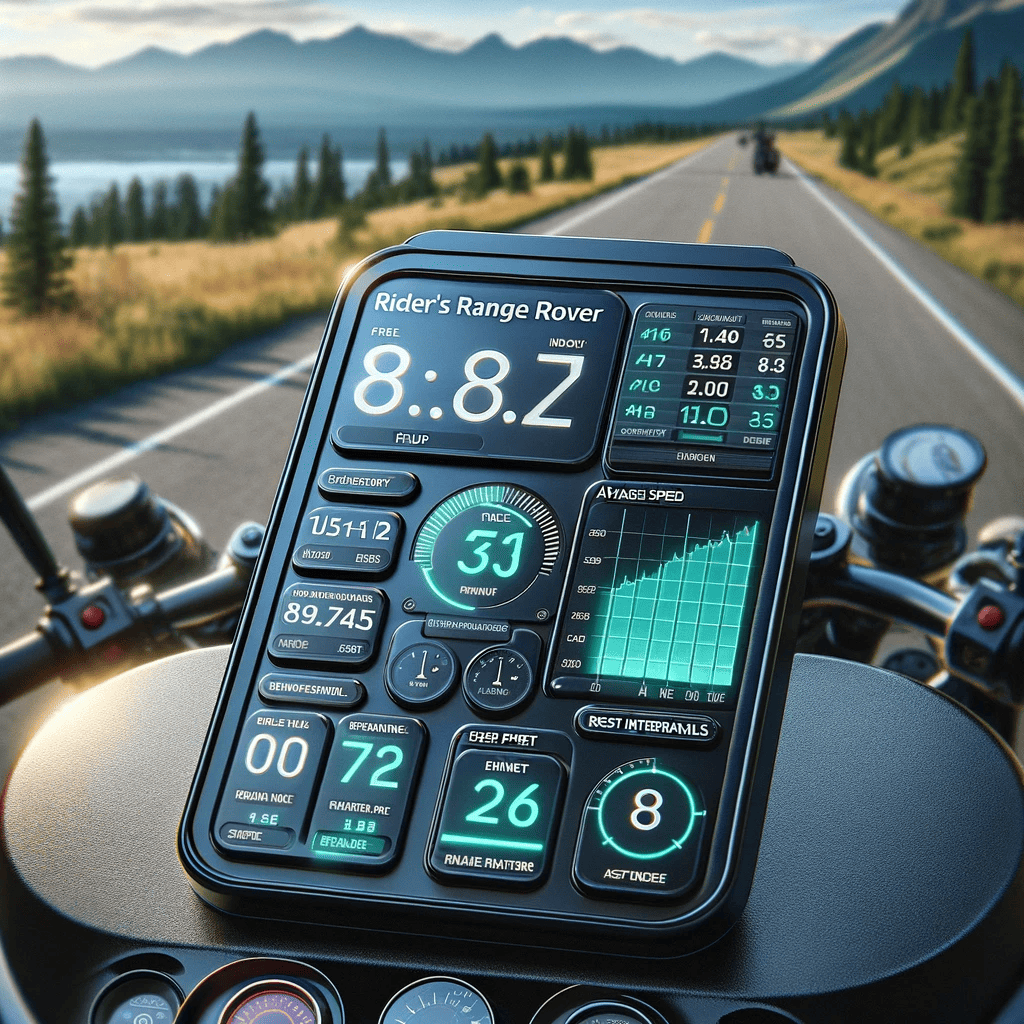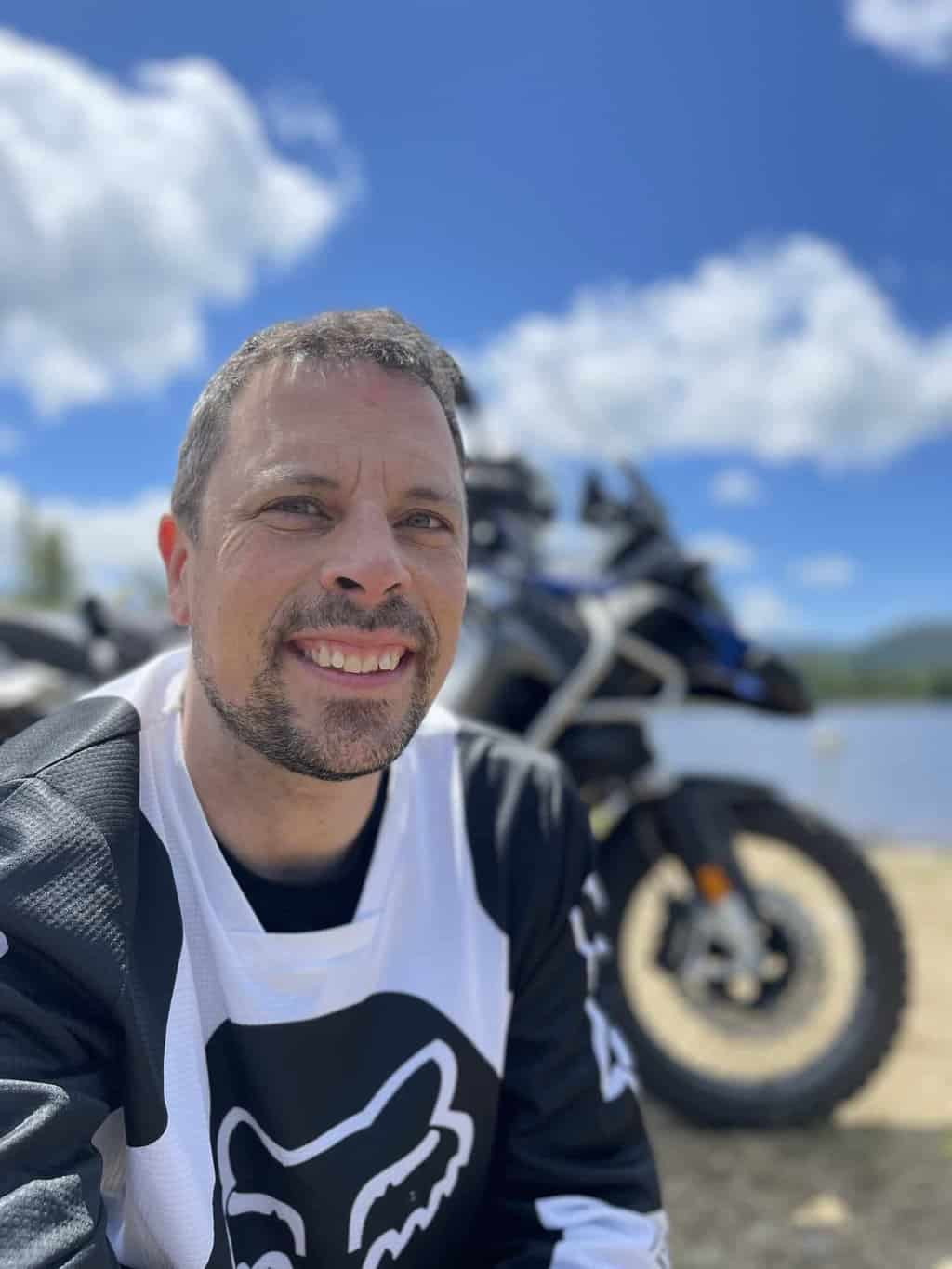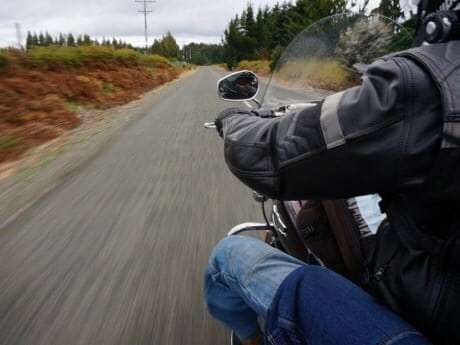Many people who decide to go motorcycle camping often wonder how many miles per day they should plan to travel, and if this itinerary is realistic or not.
It all depends on where you are, the type of terrain you are crossing and the time you have before sunset, but there are some general guidelines that can help you set your daily travel goals.
Let’s look at some of these general guidelines, as well as some tips to help make your motorcycle camping trip as fun and successful as possible!
If you are interested on moto camping, check our complete series of articles, we wil add articles over time to complete the series, click o the link to read.
The Freewheeling Camper’s Guide: Mastering the Art of Motocamping
Table of Contents
The Terrain
First, the most important aspect of planning your next trip is to know as much as possible about the terrain you will be crossing. It is easy to plan on a normal road, but as soon as your wheel touches the gravel, things can change quickly.
For time on a normal road, I generally take the time on Google or on my GPS for granted. If I am traveling alone on a normal gravel road, I plan for 50 km per hour, if it rains, I can plan for 40 km per hour. If I am riding on small, unknown mountain bike trails, I generally do not plan for more than 35 KM per hour.
If I expect a lot of hills and water, I even plan for 20 to 25. I generally separate my route by terrain to assess my day. If I want to make 250 KM on a specific day, I try to calculate the KM by speed.
Example 50 km on the highway (100KM/h), 150 km of gravel road (50KM/h), 10 km of hard hills (10 KM/h), 25 km of gravel road (50KM/h) and 15 KM of city road (50KM/h). Total about 5 hours or maybe 7 hours if it rains.
Assess your Ability
At this step, you must be honest with yourself. What is a good riding day for you? Can you ride more than 4-8-12 hours? Can you ride easily off-road, what if the ground is wet, what if you have a flat tire on the road. Are you traveling more than one day?
At first, your driving time should improve, but generally, after 4 or 5 days, you will start to get tired. I know my ability, I can ride 8 hours off-road per day and maintain that driving time for a long number of days.
My girlfriend, who is more of a beginner, can ride for 6 hours off-road without getting tired. If I want to push myself, I can plan a 16 hour ride per day, but don’t ask me to be operational for another 16 hours the following days.
You also need to assess your goal, whether it is to make the most miles possible, you will not plan as if you want to have time to stop and enjoy the view.
Evaluate the start and stop time and take a break.
Next step is to calculate the start of your day. Consider the time needed to pack things on the motorcycle. I usually allow 1 and a half hours in the morning, this way I can enjoy my coffee and pack the tent and sleeping bags.
For lunch, I usually allow 1 hour break to be able to cook a meal and relax a bit. For the rest of the trip I plan for 15 minutes every two hours.
So if I get up at 8am, I will be ready to leave at 9:30am, ride until 11am for a quick break, ride until 12:15pm for lunch, then ride until 3pm and stop for 15 minutes and then do the rest of the trip, hoping to stop between 4pm and 6pm. So I can expect to have between 6 to 8 hours a day to ride, if it’s late in the season remember that it will be dark when you finish your day.
Planning an alternate route
One of the advantages of motorcycle camping is that it’s relatively easy to be spontaneous. However, if you’re planning a few-day trip, it’s always a good idea to have a few alternate routes in mind, in case of bad weather or road closures.
Always have at least two plans ready, it’s easy to get frustrated and plan too much distance for a day. Having alternate routes will keep your peace of mind on the road, especially if you’re the one who planned the route.
If something happened, everyone would be happy to have a backup plan. And everyone will also be happy to talk about what could have happened without your planning over a quiet beer at the campsite.
When in doubt, always take the easiest route
One of my best rules is this one: when in doubt, always opt for the easy solution. Always, always take the easiest road even if it’s only 3pm and you still want to see if that road leads where you think.
Believe me, it’s much more fun to relax by the campfire than trying to pick up your motorcycle after it’s fallen for the third time on an unknown trail when you’re tired and there’s still 120 km to go before reaching the camp. uh uh, that never happened to Patricia…
Getting home safely
Always keep in mind that the goal, if you’re not competing in the motorcycle world championship, is to get home safely. You want to have beautiful memories and moments to tell your loved ones, not a tragedy and be angry at what you could have avoided. Always plan according to the least experienced rider, make the ride fun for them, a bit of a challenge is good, but too much and it’s no longer fun.
In general, I know that about 250 to 350KM is acceptable for me… If I’m with a beginner 250 km is the maximum I plan and even then… In the end, it’s the type of road and type of trip you’re looking for that will dictate the distance, there’s no easy way to calculate the kilometers…

Rider’s Range Rover, the ultimate Motorcycle range calculator.
Sometimes it can be hard to estimate the lenght we can ride in one day and also, the time of arrival. I have build this calculator to help new or less experienced riders to calculate and visualise if the itinitary the have planned is fesable.
As a result, wou will have the number of kilometer that you should plan for and the estimated time of arrival. The time of arrival is calculated in my time zone (-5) so I have add 5 hours to the result for it to be ok. If you are in another timezone the time of arrival need to be adjusted.
Make a quick tests with one hour ride and a departure time and you will se if everithing is ok. Note that you must take into account traffic and red light in rural area. If you input 50 KM/h in town and you circulate during rush hour, the result won’t match the reality. In this situation, maybe 20 km/h is a more realistic speed.
Thanks for using the calculator and let me know if there is anything wrong with it, I will try to update it.

Meet Simon, the 46-year-old aficionado behind YourMotoBro. With a lifelong passion ignited by motocross dreams and a Canadian Tire bicycle, Simon’s journey has been nothing short of extraordinary. From coaching underwater hockey to mastering muddy terrains, he’s an authority in thrill and adventure. Certified as an Off-Road Vehicle Excursion Guide and trained in Wilderness First Aid, Simon’s love for bikes is as diverse as his collection—from a robust BMW GSA R1200 to the memories of a Harley Davidson Night Train. By day a respected telephony consultant, by night a motorcycle maestro, Simon’s tales are a blend of expertise, resilience, and undying passion. ?️✨
